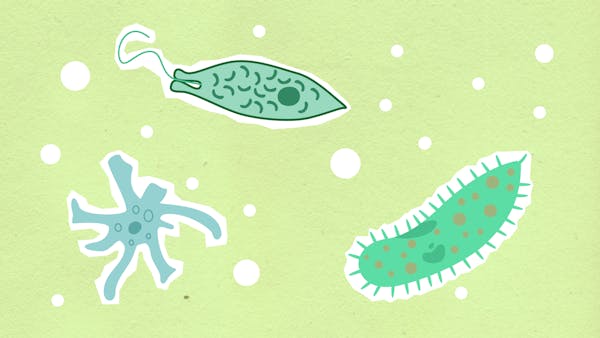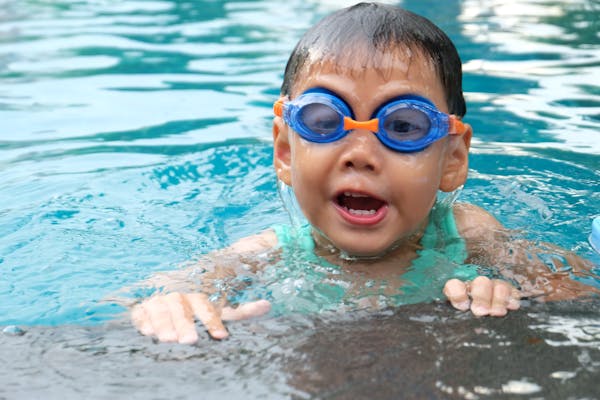Brain Eating Amoeba: 5 Things You Should Know.
Brain eating amoeba can cause several deadly diseases, including primary amoebic meningoencephalitis (PAM) and granulomatous amoebic encephalitis (GAE). Although these conditions are rare, they’re nearly always fatal if left untreated. To stay informed, keep reading to learn the facts about brain eating amoeba and how you can protect yourself from infection and illness.
1) What are brain-eating amoebas?
You may have heard of Naegleria Fowleri, or the brain-eating amoeba. What are they and what can you do to avoid contracting them? Read on to find out.
Naeglerai Fowleri (also known as the brain-eating amoeba) is a microscopic organism that can be found in warm bodies of freshwater such as lakes, rivers, ponds, and hot springs. When someone becomes infected with Naeglerai Fowleri, it will travel up their nose where it then enters the brain through neural tissue. There, it travels along nerve cells until it reaches the part of the brain called the cerebrum which controls thinking, language and emotion. When this happens there is typically no time for anti-biotics to work before death occurs due to interference with normal bodily functions.
2) Where do brain-eating amoebas live?
The brain-eating amoebas live in warm freshwater and saltwater. They are usually found in lakes, rivers and hot springs. Some of the places you may have seen these amoebas include whirlpools, fountains, bathtubs, pet water dishes and swimming pools. Naeglerai Fowleri is one of these amoebas. It's named after Dr. William J. Naegler who was the first to identify it in 1967. There has been some evidence that this amoeba can be found in tap water. If it enters your nose, it can make its way into your brain tissue and start eating away at it. Its extremely rare for this to happen but if it does, there is very little hope for survival.
3) How do people get infected with brain-eating amoebas?
There are two ways to get infected with the amoeba, Naegleria fowleri. The first way is through a fresh water source that has been contaminated with the amoebas. This would happen when you put your head underwater and an amoeba enters your nose and starts moving up the nasal passages. They can also enter your body through a cut in your skin that is exposed to fresh water containing the parasite. So if you go swimming or diving in freshwater lakes or rivers, be sure to keep your head above the surface of the water.
The second way people become infected with brain-eating amoebas is by washing their sinuses with tap water that contains Naegleria fowleri.
4) What are the symptoms of a brain-eating amoeba infection?
A brain-eating amoeba infection can be difficult to diagnose because the symptoms of a brain-eating amoeba infection are so similar to other illnesses. Symptoms typically start between one and five days after being exposed to the organism and include fever, nausea, vomiting, headache, stiff neck, confusion, lack of attention to people and events around them. Death usually occurs within 18 days of when symptoms appear, but it is possible for someone with a brain-eating amoeba infection to live as long as one month before dying. Brain-eating amoebas cannot be spread from person to person like many other infections and the only way for someone to get infected is by coming into contact with water containing these organisms from sources such as rivers, lakes or poorly maintained swimming pools.
5) How can you protect yourself from brain-eating amoebas?
You can protect yourself from brain-eating amoebas by wearing a nose clip when swimming or surfing, not going into the water if you have an open wound, and avoiding stirring up sediment in shallow bodies of fresh water. If you do get exposed to brain-eating amoebas and experience symptoms like headache, fever, vomiting, stiff neck, confusion, and hallucinations, contact your doctor immediately. More than 50% of people who are infected die as a result of this disease. It is important to note that there is no known way to cure or prevent this deadly infection. The Centers for Disease Control and Prevention recommend regular chlorine treatment for all public pools, hot tubs, bathtubs, and spas.
Take precautions to reduce risk.
1. Stay out of stagnant water.
2. Do not submerge your head in any body of water.
3. Avoid digging in or playing around in soil that might contain the amoeba and do not let children play in areas where there is a lot of standing water.
4. When you swim, keep your head above water and only go into the shallow end of a pool.
Treatment of brain eating amoeba.
Treatment for brain eating amoeba can vary depending on the severity of the infection. For example, if the patient is not in a coma and has only mild symptoms, doctors will often just prescribe antibiotics to treat the infection. However, if the patient is in a coma or has severe symptoms, they may be put on life support while doctors try to get rid of the parasite with various methods like chemotherapy or anti-parasitic drugs. Patients are usually admitted into intensive care units until they recover from their illness.
FAOs.
1.How rare is the brain eating amoeba?
Ans: microscopic amoeba is commonly found in warm freshwater, but infections are rare, according to the CDC. Only 31 Naegleria fowleri infections were reported in the US between 2012 and 2021, the CDC said.
2. Is brain-eating amoeba curable?
Ans: The right treatment isn't clear. A number of drugs kill N. fowleri amoebas in the test tube. But even when treated with these drugs, very few patients survive.
3. Where is brain-eating amoeba found?
Ans: Naegleria fowleri is an amoeba that is commonly found in warm freshwater lakes, rivers, canals, and ponds throughout the United States. It can cause primary amebic meningoencephalitis (PAM), a brain infection that may occurs.
Conclusion.
In conclusion, the brain eating amoeba is a rare but deadly parasite that can cause a disease called primary amoebic meningoencephalitis (PAM). If you are exposed to the brain eating amoeba and contract this disease, your chances of survival are slim. PAM has a fatality rate of 98%. However, it's important to know what signs or symptoms to look for if you think you might have contracted the infection so that an early diagnosis can be made and treatment begun. The treatment for PAM is not always successful, but it does increase the likelihood of survival.

.png)








